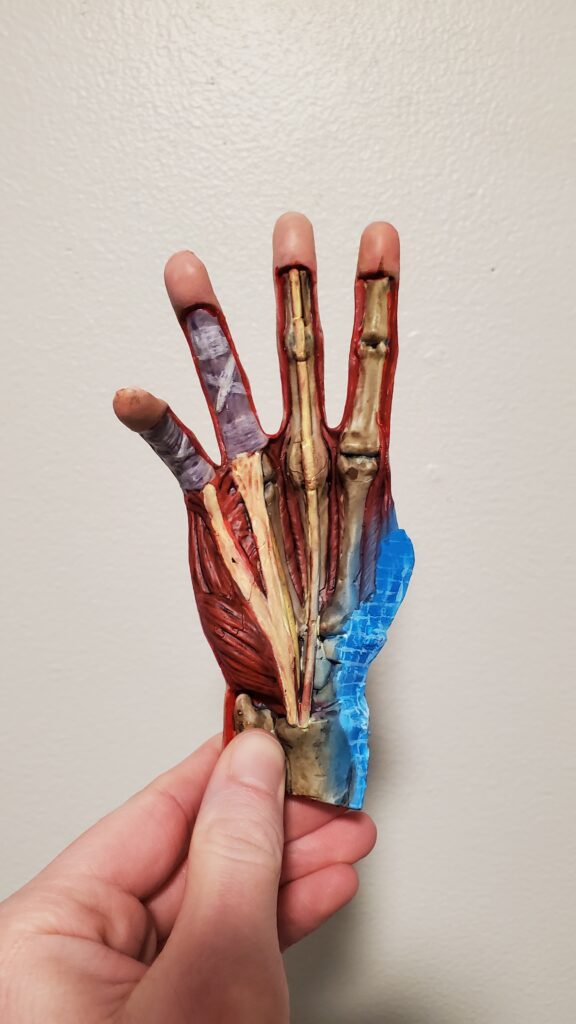This is a model I printed and painted, showing some of the muscles in the hand (among other tissues) that would be affected by muscle weakness and spasticity in a stroke victim.
Don’t mind the missing thumb. The print partially failed. To make do with what I had, I painted in a digital-like effect to make the model look like a hologram that bugged out for a moment.


The objective of Josiah’s piece was to use a 3D-printed model of a hand to expose some of the muscles that might be affected by contractures in a stroke victim. He begins his written portion and explanation of his piece by first starting with the characteristics of muscles and the process by which a person voluntarily contracts their muscles. He then follows this explanation with how it relates to the topic of his project, how strokes interfere with these characteristics and processes, and their influence on the person’s motor function.
The conclusion that was made was that stroke causes adverse effects on the brain which contributes to muscle weakness and can further develop into contracture and paralysis. In addition, Josiah also found that the brain and nervous system adapts to the damage done by a stroke. In general, if hemiparesis occurs, the corticospinal tract must be included in the regions that suffer damage from a stroke. The side of the brain that the stroke occurs in determines what side of the patient’s body will experience muscle weakness.
Overall, I admired Josiah’s 3D-printed model hand, even if there was some struggle with the creation of the thumb. The model portrayed a detailed and visually appealing demonstration of the inner workings of the hand that are affected by muscle weakness caused by strokes. I also loved how thorough Josiah was with bridging the musculoskeletal system with the nervous system which can be a daunting and difficult task to do in general.